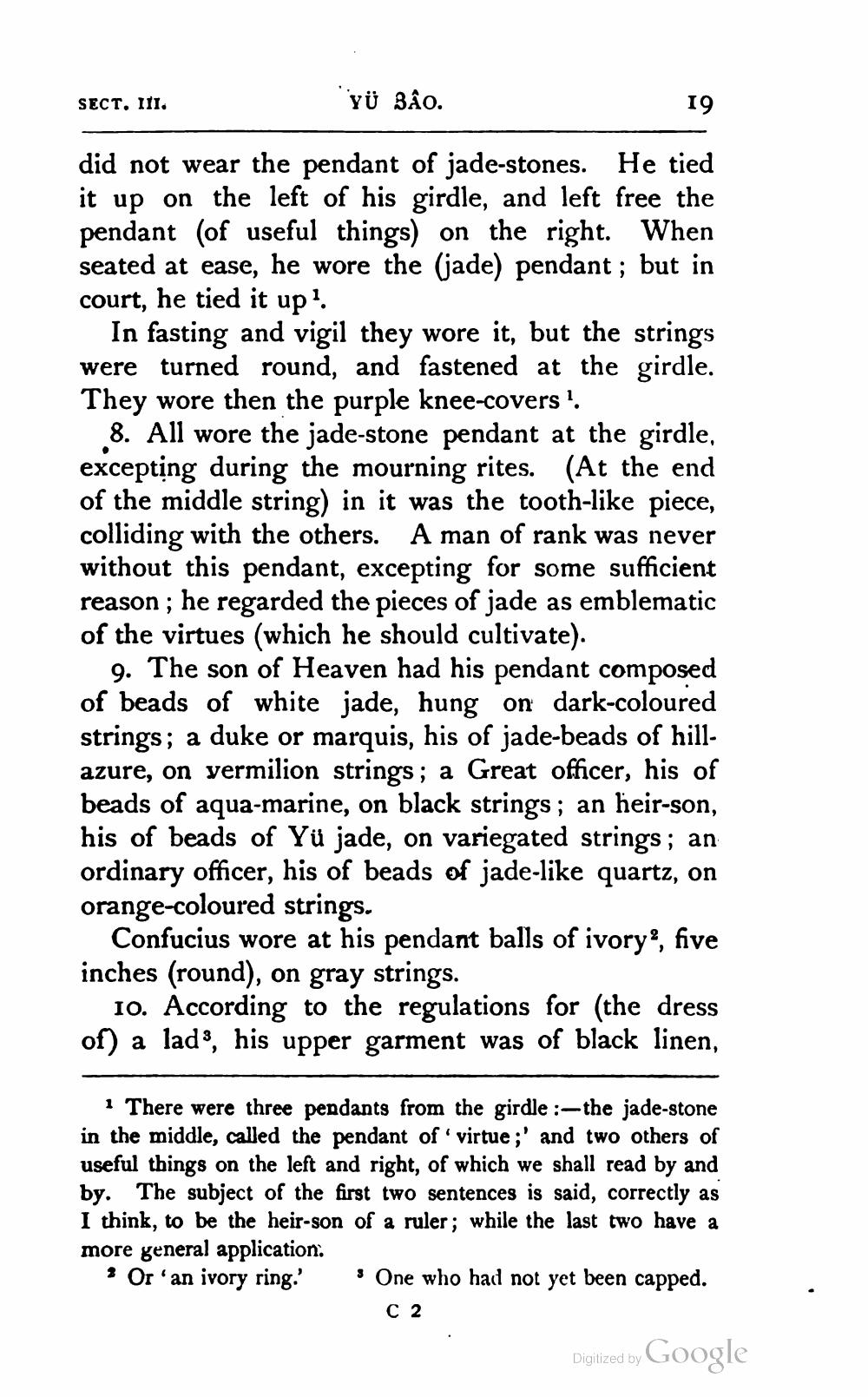________________
SECT. III.
19
did not wear the pendant of jade-stones. He tied it up on the left of his girdle, and left free the pendant (of useful things) on the right. When seated at ease, he wore the (jade) pendant ; but in court, he tied it up!
In fasting and vigil they wore it, but the strings were turned round, and fastened at the girdle. They wore then the purple knee-covers!
8. All wore the jade-stone pendant at the girdle, excepting during the mourning rites. (At the end of the middle string) in it was the tooth-like piece, colliding with the others. A man of rank was never without this pendant, excepting for some sufficient reason; he regarded the pieces of jade as emblematic of the virtues (which he should cultivate).
9. The son of Heaven had his pendant composed of beads of white jade, hung on dark-coloured strings; a duke or marquis, his of jade-beads of hillazure, on vermilion strings; a Great officer, his of beads of aqua-marine, on black strings; an heir-son, his of beads of Yü jade, on variegated strings; an ordinary officer, his of beads of jade-like quartz, on orange-coloured strings.
Confucius wore at his pendant balls of ivory?, five inches (round), on gray strings.
10. According to the regulations for (the dress of) a lads, his upper garment was of black linen,
1 There were three pendants from the girdle :- the jade-stone in the middle, called the pendant of virtue ;' and two others of useful things on the left and right, of which we shall read by and by. The subject of the first two sentences is said, correctly as I think, to be the heir-son of a ruler; while the last two have a more general application. Or'an ivory ring. One who had not yet been capped.
C 2
Digitized by Google




